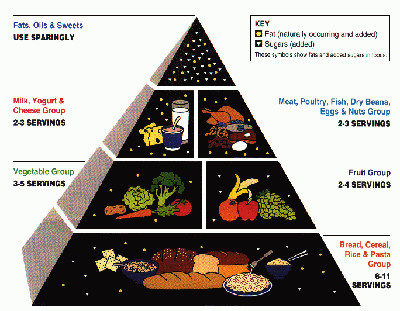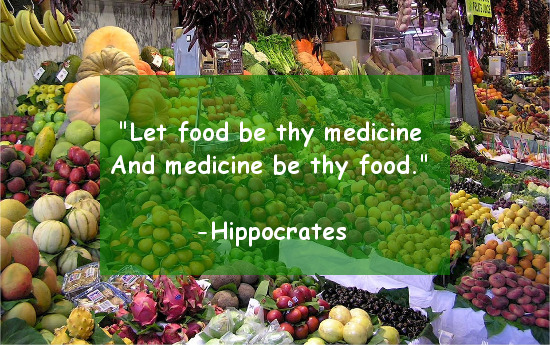Factors Causing the American Obesity Epidemic
Nutrition has been a controversial issue in the United States (and other parts of the world) for several decades, especially since we are in an obesity and chronic illness related epidemic right now. We have been bombarded with a ton of diets, fads, weight loss combinations and even government recommendations to try and solve this epidemic. There are factors causing the American obesity epidemic
According to the Centers for Disease Control (CDC) the percentage of obese adults (BMI over 30) as of August 2023 is at 40.3% in adults over 20 years of age. (1) The number of adults over 20 that are either overweight or obese (BMI over 25) is at 73.6%. Unfortunately, these figures continue to grow year after year.
How did we get to this point? What can we do to fix the problem? How does it relate to those with Lipedema or Lipo-Lymphedema? Is there a real solution in the sea of fad diets and government recommendations? Let’s take a look at how we got here first and then how we can reclaim our health, especially for those suffering from adipose tissue fat disorders. Let’s examine the factors causing the American obesity epidemic.
Defining the Obesity Epidemic
We define an epidemic as “a widespread occurrence of an infectious disease in a community at a particular time.” (2) The Centers for Disease Control (CDC) has been tracking the rate of change in obese Americans for a couple decades now and have discovered we have an epidemic on our hands with numbers that are steadily growing each year.

When you look at the graph above you will notice the obesity epidemic started in the mid 1970’s to early 1980’s with only 12-15% of adults at obesity rates. You can then see a steady increase in the amount of adults with obesity through the 1990’s into the 2000’s reaching 40% of the adult population classified as obese today. Almost as alarming is the steady increase in extremely obese adults now over 10%!
These are staggering statistics! If we don’t reverse this trend soon the amount of change required to accommodate a larger sized population is going to need to rapidly evolve. We will also see rising healthcare costs and medical needs for issues directly related to those developing chronic diseases, such as Type 2 diabetes, heart conditions, cardiovascular problems and hypertension. In fact, many of the current chronic health problems facing society today are directly related to the food we eat to include those mentioned above and autoimmune diseases, Alzheimer’s, fibromyalgia, and more. This will also impact the quality of life issues as chronic pain and mobility issues set in.
Unfortunately, those with genuine adipose tissue disorders are probably included in these numbers as BMI doesn’t discriminate against fat types. Of course that also doesn’t mean those with adipose tissue disorders are not also overweight or even carry enough regular fat to be considered obese too. Any way you slice this something has to be done now to prevent the onslaught of healthcare issues and the shortening of life from obesity related problems!
How Did We Get to an Obesity Epidemic?
Why are we in an obesity epidemic today? Simply put, we have forgotten how to eat properly to fuel our bodies! Unlike our ancestors who died from old age or infectious diseases, such as small pox, tuberculosis, measles, pneumonia, etc., we are suffering and dying from chronic diseases. Technology has allowed us to find cures for the infectious diseases that killed our ancestors, but it will be through what we put in our mouths that will cure most of our rampant chronic diseases – in other words we need to change the way we eat!
I am not a doctor or nutritionist, but have been involved in the dieting world for almost 40 years to try and help my body recover from a severe Lipo-Lymphedema condition that has plagued me since puberty. I have tried many of the fad diets, joined several weight loss organizations and even followed the weight loss management plan prescribed by my medical group with no success. All of these left me hungry, weaker and in worse shape than when I started. Why? Because I didn’t understand the science behind how your body uses food. It’s complex, but I am learning.
Let’s take a look for a moment at the various false promises made to us by organizations we trusted to ensure we maintain a healthy body. It is clear very few of these organizations understood the science behind how your body uses food and not enough research was done before trying to establish sound dietary guidelines for the American public. Below is a brief synopsis of the factors that led up to the current obesity and chronic disease epidemic we face today. We will briefly address each factor below as they could easily expand into their own page(s).
Factor #1 – USDA Food Pyramid is Wrong
When you look at the original food pyramid that most of us grew up with it, more emphasis was placed on servings of processed grain products, such as breads, pastas, cereals and rices. These high carbohydrate products are exactly what was packing on the pounds.
Less emphasis was placed on eating healthy oils and fats, which is exactly what your body needs to promote healthy active brain function. In fact, we were directed that a diet low in fats and sugar substitutes were healthier. Industries popped up literally overnight to bring us low-fat food alternatives and lots of sugar-free options, none of which are actually good for your body! In fact, studies have shown artificial sweeteners are linked to cancers, gut biome damage and migraines.
Eventually the USDA (United States Department of Agriculture) changed its food pyramid in 2005 to a newer version called MyPyramid, which was then replaced in 2011 with their new food representation called MyPlate. Emphasis is placed on what food group item should be placed on a plate and in what portion sizes. They are getting closer but still have work to do.
Part of the problem with following the USDA guidelines is two-fold. First, they are part of the government and subject to lobbyist influence. This influence has resulted in shifts in location on the pyramid and plate graphics along with ambiguity on what is included in which group and what are the healthiest items in those groups.
Secondly, many medical professionals are still confused by portion representations and the research leading to these findings. The USDA’s prioritization is taking care of their food providers not providing sound nutritional information to the medical community or the public.
Factor #2 – Low Fat Decision
In the 1970s US Senators tried to find a reason why people were dying early with heart related disease problems and noted that early death must be linked to the current American diet. From these hearings they determined that fat rich foods, such as eggs, dairy and meats, would increase the bad LDL cholesterol thus leading to increasing heart disease. There was not a lot of research and data to base this decision, but American dietary guidelines were established to avoid fats and increase carbohydrates, such as grains, pastas and rices. (4)
These new dietary guidelines caused a huge industry boom of products made of low fats and are everywhere you look in the grocery store. What this industry didn’t tell you was that lowering the fat content meant they needed to increase the taste and used sugars to fill that gap. Increasing our consumption of sugars (carbs) helped pack on the pounds and create a sweets craving in many of us.
If you notice from the timeline above this dietary shift in eating is about the time the obesity epidemic takes hold. In trying to uncover the problem of an early onset of heart disease, our government inadvertently put Americans on an eating plan that would have long lasting severe health consequences today! This includes skyrocketing numbers of Type 2 diabetes, heart disease, hypertension and obesity.
Scientific studies are now showing that sustained brain health and function are directly attributed to eating a diet rich in fats, particularly Omega-3 fatty acids. Wonder why we are seeing such a high prevalence of Alzheimer’s and other dementia in our aging population? Could it be that their diets lack(ed) the essential fats needed to stimulate and regulate good brain health? (5)
Now we realize fats are required for essential brain and body regulation not to mention good digestive health. Carbohydrates, especially sugars, are the real problem in our diets. We need to change our current trend in carbohydrate consumption and move back to primarily vegetables, meats and full fats with limited dairy and carbohydrates (not sugar) to reverse the substantial amount of damage we have done to our bodies these past four decades!
Factor #3 – Sugar Substitutes
About the same time we plunged into the low fat movement, artificial sweeteners surged in the market touting a low or no calorie alternative to drinks and foods we enjoyed consuming. Industry providers claimed we could cut calories while not sacrificing our taste for sweets. They dominated our favorite products like soda, yogurts, candy and coffee additives (and still do today).
What we didn’t know, and no one told us, was what saving 16 calories per teaspoon of natural sugar would cost us in various health problems down the road. This includes cancers, metabolic disorders, brain impairment and a perpetuating craving for more sweets. The body does not metabolize artificial sweeteners the same way it processes natural sugars. Artificial sweeteners “contribute to metabolic disorders by altering the activity of certain genes responsible for the breakdown of macromolecules such as fats and proteins,” unlike natural sugars, such as glucose and fructose, “which contribute to cardiovascular disease through insulin resistance and by damaging the cells lining the body’s blood vessels.” (6)
Unfortunately, 40% of Americans consume low or no calorie artificial sweeteners on a daily basis. Most do not even know they are consuming them in the food and drink choices they make each day nor do they understand the potency level of each substitute. And we consume 30-40 teaspoons on average per day of sugar while the USDA recommends no more than 9 teaspoons per day, which is equivalent to a 16 ounce bottle of regular soda! We need to do much better in getting our sugar cravings under control or the Type 2 diabetes and obesity epidemics will only continue!
Here are the common Sugar substitutes and the brand names you might be more familiar with:
- Saccharin (Sweet and Low® Sweet Twin® Sweet’N Low® Necta Sweet®)
- Aspartame (Nutrasweet®, Equal®, Sugar Twin®)
- Acesulfame potassium (Ace-K) (Sweet One® , Sunett®)
- Sucralose (Splenda®)
- Neotame (Newtame®)
- Advantame
- Steviol glycosides (Truvia®, PureVia®, Enliten®)
- Luo Han Guo fruit extracts (Nectresse®, Monk Fruit in the Raw®, PureLo®)
- Swerve – new one not on the list but recently discovered
Factor #4 – Counting Calories and Exercise
This one is near and dear to those of us suffering with Lipedema or Lipo-Lymphedema!
How many of you remember being told by your doctor, nutritionist or even one of the larger weight loss organizations that you needed to count calories and stay under a 1200, 1500 or 1800 calorie daily plan to lose weight? Coupled with calorie restrictions and counting you also needed to up your daily exercise regimen as your best bet to lose that stubborn fat. What we found was this was not an effective way to manage your weight or eat a healthy diet! And many of us paid a lot of money for gym memberships that we stopped going as we saw little to no visible success for our hard work.
Tracking everything you eat and determining its caloric count is tedious and inaccurate. Many people do not have time to weigh, measure and record every bit of food eaten in a day. This leads to frustration, abandonment of the program and eventual overeating.
Counting calories also keeps eating focused on low calorie food options instead of considering the quality of what you’re eating. The food choices may not be nutritious options and actually work against maintaining a healthy balance of nutrients, vitamins and minerals that your body needs to function properly. It is also not a sustainable activity.
Our bodies were made to move around. For some of us suffering with Lipedema or Lipo-Lymphedema it may be limited to less strenuous exercises such as swimming, stretching, walking or cycling in a way that does not cause pain, swelling or bruising. Exercise should help keep a tone body, unless you are specifically building muscle, and be appropriate for your physical condition.
Exercise traditionally focused on high-impact aerobics or other regimens not suitable or sustainable by most. People often overextended themselves doing exercises that hurt or caused injury in the hopes of doing more would yield better weight loss. It usually didn’t produce the desired effect. Exercise is necessary but should be tailored to the physical condition of each individual, especially for those with any physical disabilities.
Factor #5 – Portion Sizes
Relative to food, “if having too much of a good thing” is bad for you what do you think of “having too much of a bad thing” might do to you? Take for instance soda pop. Soda used to come in eight ounce bottles and that is a serving size. There is no redeeming qualities to soda. It is void of nutrition and contains almost your daily recommended intake of sugar for the day, which is six teaspoons for women and nine for men. If eight ounces is bad for you, consider the average can or bottle is now 12-16 ounces, which almost doubles your sugar allowance for the day. And if you stop at your local 7-11 you can get up to 64 ounces of soda or slurpee in their Big Gulp cup. What person on this planet needs all those artificial ingredients and sugar!!! That’s 40 teaspoons of sugar or five to seven times your recommended allowance for the day!
Dinner plate sizes used to be smaller, about 7 to 9 inches in size, and held the correct portion sizes needed for your body. Now our dinner plates at home are 10 to 12 inches, which holds substantially more food thus making us want to fill out plate and overeat. Restaurants now serve meals on plates or platters up to 13 inches in size to supersize your meal with larger portion sizes you just don’t need.
Note: If you can’t get your meal in smaller sizes or on smaller plates, split your meal in half and take it home for another meal later (assuming is was a healthy meal to start).
Almost anywhere you turn in a supermarket these days are options for larger portions meals, snacks and drinks. And if you notice those larger alternatives are usually high carbohydrate or sugar driven. After you consume half the food and your blood sugar drops, you will feel hungry again and consume the rest of the food. Carbohydrates, which cause energy spikes and drops that are not good for your body, are processed differently than proteins and fats, which provide you steady sustained energy levels. If you feel compelled to buy a bigger portion of food make sure it is at least a healthy option, like a large volume of vegetables!
Factor #6 – Don’t Have Time to Focus on Food
This one affects many people here in the United States. We lead such busy lives with both parents each working one or more jobs, juggling their children’s activities, engaging in social engagements and running a home (finances, cleaning, maintenance, etc.). This leaves little time to shop, prepare and eat healthy meals.

We turn to frozen and boxed foods that can be microwaved or heated on the stove or oven quickly often not focusing on the nutritional content of what they are putting on the table for the family. They may also opt for drive through services where we can get a family meal in minutes with little to no prep time. These may include the faster cheaper food at places such as burger and taco outlets to family style meals available at drive-up service in local restaurants.
Choosing any of these options is a trade-off of time for convenience – which does not equate to eat a healthy meal. Most of the fast foods are chock full of calories, sugars and carbohydrates, which end up packing on the pounds and contributing to our Type 2 diabetes and obesity epidemics! Adults can rationalize what they are putting in their mouths but children cannot. Therefore, our bad food choices are negatively impacting our children and their future!
It is imperative we take the time necessary to choose and prepare our meals wisely. Focus on eating real food – fresh meat, fresh vegetables, fats, fresh dairy, fresh fruit and limited carbohydrates – all that is organic non-gmo in origin. If you local restaurant can provide this then you might have a good alternative to cooking your own food. But if you want to create and maintain a healthy body and brain then eating correctly is paramount to your longevity and avoiding serious health conditions. This is especially important for children with growing bodies and brain development!
For those suffering with Lipedema or Lipo-Lymphedema it is paramount we eat as nutritiously as possible to reduce body-wide inflammation and pain. Many of us also suffer with other co-morbidities, which necessitate eating a low carbohydrate higher protein and fat diet to address digestive related issues (GERD, IBS, leaky gut, Celiac disease, etc.), allergies (gluten, Mast Cell Activation Diseases, etc.) not to mention Type 2 diabetes, hypertension and heart disease. It may even help us lose some non-Lipedema fat too!
Factor #7 – Current Financial Crisis in the USA
Many families live on fixed budgets, having to balance rents, mortgages, car payments/repairs, utility bills, medical costs education, childcare and food costs. Families need to juggle these costs monthly often having to choose which bills to pay and where to cut expenses. This usually comes at the choice to forgo healthy food choices in lieu of paying for medicines or rent/mortgage expenses.
According to the Center of Budget and Policy Priorities the effects of the recently passed Big Beautiful Bill on July 4, 2025 “will dramatically raise costs and reduce food assistance for millions of people by cutting federal funding for the Supplemental Nutrition Assistance Program (SNAP) by $187 billion through 2034 (about 20 percent), according to the Congressional Budget Office (CBO) — the largest cut to SNAP in history. These cuts will increase poverty, food insecurity, and hunger, including among children.” (6)
As you can see these changes “will affect all of the more than 40 million people who receive basic food assistance through SNAP each month, including some 16 million children, 8 million seniors, and 4 million non-elderly adults with disabilities.” (6) Not only will affording basic food become a challenge for many it will put a serious strain on local food banks and pantries, who already have difficulty meeting weekly needs. Note that some states have already started implementing benefit reductions and new work requirements ahead of the upcoming changes scheduled to implement in 2026.
The government has also initiated a new health directive to “Make America Healthy Again (MAHA)”. This objective is NOT attainable – NOT EVEN CLOSE! Cutting or eliminating critical food supplementation, especially for children, means people will have to cut back on groceries and make less costly food options. These choices will force LESS healthier options, which will result in increased illnesses and chronic conditions over time. Overall, the public will become sicker, including children, and the cost of healthcare will rise substantially. If you truly want a healthier population and a reduction of healthcare costs make healthier food options affordable, especially for the poverty class, children, veterans, seniors and disabled Americans!
The Solution
For the last four decades we have been encouraged to eat an unhealthy diet by our government, the food industry, weight loss organizations and lobbyists. This has had a staggering impact of health of the US population with skyrocketing increases in Type 2 diabetes, obesity, hypertension, heart problems and brain diseases!
If we do not change our eating habits NOW we will be plagued by whopping healthcare costs, shortened life spans, increasing mental diseases, poor quality of life, and continued escalation of obesity and chronic related diseases! More education and healthy food options need to be made available to reverse the epidemic started four decades ago.
People need to do their own research and be educated about the quality and type of food they are putting in their mouths. You need to understand concepts and the importance of organic vs non-organic, genetically modified organisms (GMO), grass-fed animals, and simple vs complex carbohydrates so you can choose the healthiest and cleanest food items for consumption. If you want to feel better, move better, live better and enjoy life well into your senior years for yourself and your family then eat better starting today!
The solution is easy – EAT REAL FOOD, like your ancestors, that properly fuels your body the way it was meant to be. This means eating healthy proteins to sustain energy and activity levels and limiting carbohydrates (sugars) intake to avoid the cyclical energy spikes and drops that also pack on the pounds. You also need healthy fats and vegetables for heart and brain function as well as getting all the vitamins and minerals necessary to keep your body functioning at peak performance.
This means you need to stop eating all the prepackaged boxed items made from mostly artificial chemicals and ingredients. It also means avoiding all sugar sweetened items too. Read your food labels carefully. Sugar has many names and places it can hide in your food. Some of the more popular forms include: glucose, fructose, high fructose corn syrup, maltose, lactose and 51 more names. Choose foods with only ingredients you recognize and that are fresh.
Factors Causing the American Obesity Epidemic Summary
I can’t say this enough. If you want to feel better, move better, eliminate obesity and obesity-related diseases, reduce body inflammation and other health related conditions – EAT REAL FOOD! Stop eating the processed foods and drinks as well as items with sugars or artificial sweeteners. This is especially important for those of us who suffer with Lipedema and Lipo-Lymphedema.
We need to change our eating habits NOW! However you craft your dietary intake you need to limit your carbohydrates consumption, especially the sugars, and increase your healthy fats, proteins and vegetable foods. You could consider a structured eating plan such as a Paleo or Ketogenic plan, which we will cover in our next post or create a modified plan that works best for your situation. A Ketogenic plan has shown positive and encouraging results for those with Lipedema and Lipo-Lymphedema!
We need to reverse this obesity epidemic and put a stop to those businesses that promote an unhealthy way of eating. Personally, I am tired of being sick, lethargic, suffering from brain fog, constantly battling autoimmune diseases and struggling with Lipo-Lymphedema. In just a week or two of eating a modified Ketogenic plan I am feeling my body change in size and shape. I have better clarity of thought, greater sustained energy levels and less digestive problems. I look forward to being even healthier and eliminating certain medical problems in the coming months and will keep you posted.
I would love to hear from people who have transformed their health and lives by changing their eating habits to healthy options. If you have Lipedema or Lipo-Lymphedema I would love to hear how a Paleo or Ketogenic plan has impacted your health and weight! Please drop me a note below.
Stay tuned as we look at healthy eating plans in our next post.
To your improved health!
References:
- (1) Center for Disease Control – Obesity and Overweight
- (2) Dictionary.com – Epidemic definition
- (3) Center for Disease Control – Prevalence of Overweight, Obesity, and Extreme Obesity Among Adults Aged 20 and Over: United States, 1960–1962 Through 2013–2014
- (4) NPR.com – Why We Got Fatter During The Fat-Free Food Boom
- (5) US National Library of Medicine: National Institutes of Health – Brain foods: the effects of nutrients on brain function
- (5) CNN – Artificial sweeteners: Where do we stand?
- (6) Center of Budget and Policy Priorities – By the Numbers: Harmful Republican Megabill Takes Food Assistance Away From Millions of People
Additional Resources:





